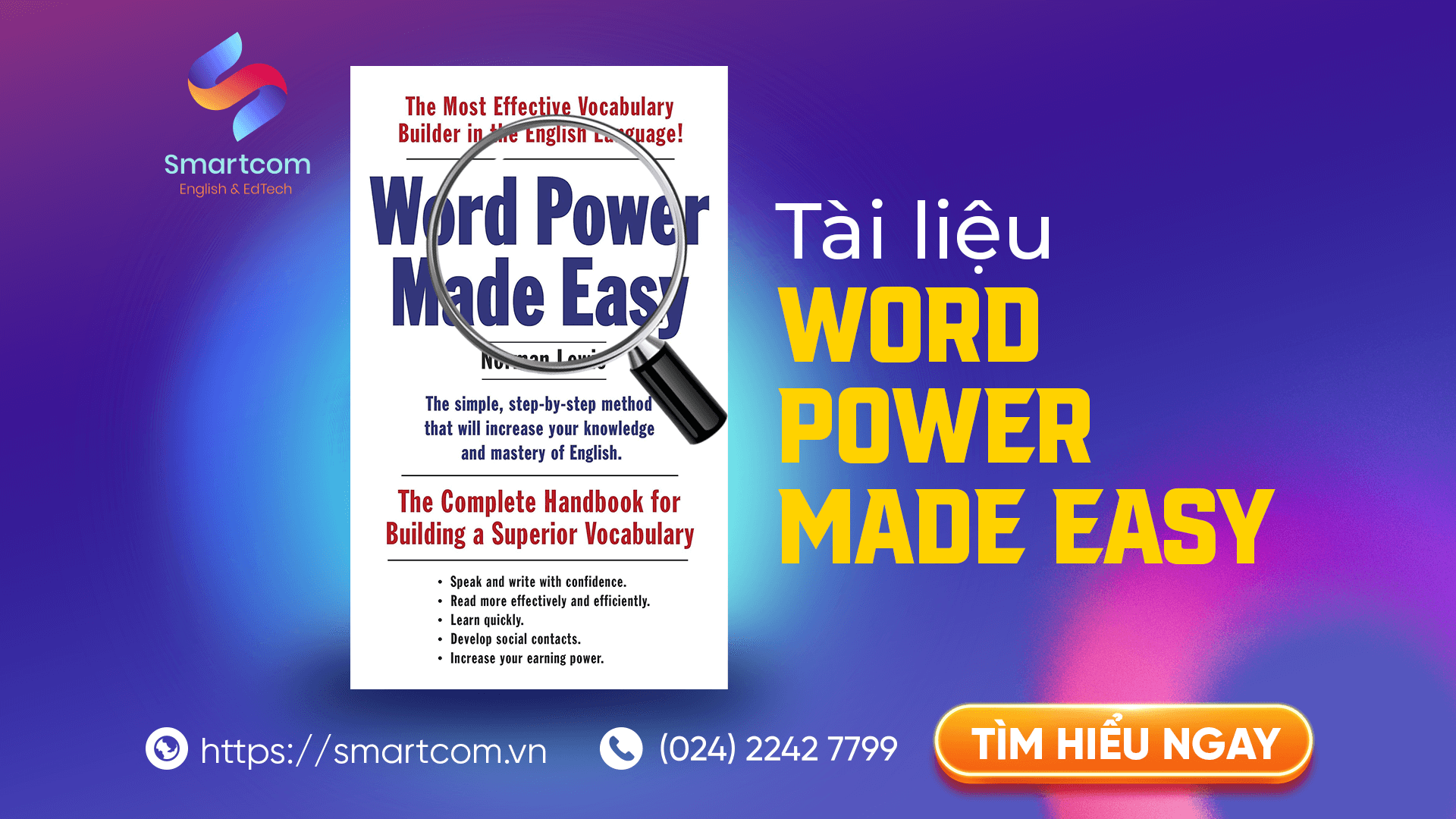Đội ngũ chuyên gia tại Smartcom English là tập hợp những chuyên gia đầu ngành trong lĩnh vực IELTS nói riêng và tiếng Anh nói chung. Với phương pháp giảng dạy sáng tạo, kết hợp với công nghệ AI, chúng tôi mang đến những trải nghiệm học tập độc đáo và hiệu quả. Mục tiêu lớn nhất của Smartcom Team là xây dựng một thế hệ trẻ tự tin, làm chủ ngôn ngữ và sẵn sàng vươn ra thế giới.
Chủ đề Travel and Transport (du lịch và phương tiện đi lại) tập trung vào các phương tiện giao thông, sự tiện lợi và an toàn trong việc di chuyển, cũng như những xu hướng tương lai trong ngành du lịch. Để trả lời tốt các câu hỏi về chủ đề này, bạn cần có khả năng phân tích và mô tả các phương tiện giao thông, các yếu tố ảnh hưởng đến sự an toàn và sự phát triển của ngành du lịch, cùng với việc sử dụng từ vựng chính xác và phong phú. Cùng Smartcom English khám câu hỏi mẫu và cách trả lời chi tiết qua bài viết dưới đây!
Các câu hỏi thường gặp
● Do old or young people use public transportation more?
● What are the drawbacks of private vehicles?
● How could public transportation be improved?
● Should city planners consider public transport when designing cities?
● What can the government do to improve public transport outside of urban areas?

Do old or young people use public transportation more?
(Người già hay người trẻ sử dụng phương tiện giao thông công cộng nhiều hơn?)
“In my opinion, younger people, especially students and young professionals, tend to use public transport more frequently. This is primarily because they may not be able to afford private vehicles or fuel costs, and public transportation is a more cost-effective option. Additionally, young people often prefer public transport due to its convenience in urban areas, where driving can be challenging due to traffic congestion. On the other hand, older people may be less likely to rely on public transport as they often have their own cars.”
Vocabulary ghi điểm:
- Fuel costs /fjuːl – kɒsts/: chi phí nhiên liệu
- Cost-effective /kɒst – ɪˈfɛktɪv/: tiết kiệm chi phí
- Urban areas /ˈɜːbən – ˈeərɪəz/: khu vực thành thị
- Traffic congestion /ˈtræfɪk – kənˈʤɛsʧən/: tắc nghẽn giao thông
What are the drawbacks of private vehicles?
(Những nhược điểm của phương tiện cá nhân là gì?)
“Private vehicles come with several disadvantages, especially in large cities. The most obvious issue is air pollution caused by the emissions from cars, which significantly contributes to global warming. Additionally, owning a private vehicle can be costly, with maintenance fees, insurance premiums, and fuel expenses adding up over time. Finally, private vehicles take up a lot of space on the road, leading to parking shortages and exacerbating traffic problems.”
Vocabulary ghi điểm:
- Air pollution /eə – pəˈluːʃən/: ô nhiễm không khí
- Maintenance fees /ˈmeɪntənəns – fiːz/: phí bảo trì
- Insurance premiums /ɪnˈʃʊərəns -ˈpriːmɪəmz/: phí bảo hiểm
- Fuel expenses /fjuːl – ɪkˈspɛnsɪz/: chi phí nhiên liệu
- Parking shortages /ˈpɑːkɪŋ -ˈʃɔːtɪʤɪz/: thiếu chỗ đậu xe
How could public transportation be improved?
(Phương tiện giao thông công cộng có thể được cải thiện như thế nào?)
“To improve public transportation, several strategies could be implemented. One major improvement could be increasing the frequency and reliability of services, ensuring that buses and trains run on time. Another way to enhance public transport is by making it more affordable, perhaps through government subsidies. Additionally, modernizing the fleet by introducing eco-friendly vehicles like electric buses would not only reduce carbon emissions but also appeal to environmentally-conscious passengers.”
Vocabulary ghi điểm:
- Frequency /ˈfriːkwənsi/: tần suất
- Reliability /rɪˌlaɪəˈbɪlɪti/: độ tin cậy
- Affordable /əˈfɔːdəbl/: có giá hợp lý
- Subsidies /ˈsʌbsɪdiz/: trợ cấp
- Eco-friendly vehicles /ˈiːkəʊ -ˈfrɛndlɪ -ˈviːɪklz/: phương tiện thân thiện với môi trường
- Carbon emissions /ˈkɑːbən – ɪˈmɪʃənz/: khí thải carbon
Should city planners consider public transport when designing cities?
(Các nhà quy hoạch đô thị có nên cân nhắc phương tiện công cộng khi thiết kế thành phố không?)
“Absolutely yes, public transport should be a major consideration when designing cities. By incorporating efficient public transportation networks, such as bus rapid transit systems or light rail, city planners can help reduce traffic congestion and lower carbon footprints. Designing cities with integrated transport systems can also encourage more people to use public transport, leading to less reliance on private vehicles and a cleaner environment.”
Vocabulary ghi điểm:
- Bus rapid transit systems /bʌs -ˈræpɪd -ˈtrænzɪt -ˈsɪstəmz/: hệ thống xe buýt nhanh
- Light rail /laɪt reɪl/: tàu điện nhẹ
- Traffic congestion /ˈtræfɪk – kənˈʤɛsʧən/: tắc nghẽn giao thông
- Carbon footprints /ˈkɑːbən -ˈfʊtprɪnts/: dấu chân carbon (lượng khí thải)
- Integrated transport systems /ˈɪntɪˌgreɪtɪd -ˈtrænspɔːt -ˈsɪstəmz/: hệ thống giao thông tích hợp
What can the government do to improve public transport outside of urban areas?
(Chính phủ có thể làm gì để cải thiện phương tiện giao thông công cộng ngoài khu vực đô thị?)
“The government could take several steps to improve public transport in rural areas. Firstly, they could invest in expanding bus routes and train services to more remote locations, ensuring accessibility for all citizens. Another solution is to provide financial incentives or subsidies to make public transport more affordable in these regions. Additionally, introducing electric or hybrid buses could reduce the environmental impact while still providing reliable transport services.”
Vocabulary ghi điểm:
- Bus routes /bʌs – ruːts/: tuyến xe buýt
- Train services /treɪn -ˈsɜːvɪsɪz/: dịch vụ tàu hỏa
- Financial incentives /faɪˈnænʃəl – ɪnˈsɛntɪvz/: khuyến khích tài chính
- Electric or hybrid buses /ɪˈlɛktrɪk – ɔː -ˈhaɪbrɪd -ˈbʌsɪz/: xe buýt điện hoặc hybrid
How do you go to work/school? (Bạn đi làm/học bằng phương tiện gì?)
I usually commute to school by motorbike, as it’s a popular and convenient choice in my city. It helps me avoid traffic jams and offers more flexibility than public transport, making my daily travel quick and environmentally friendly compared to cars.
Vocabulary ghi điểm:
- Commute /kəˈmjuːt/: đi lại (đến nơi làm việc/học tập)
- By motorbike /baɪ ˈməʊtərbaɪk/: bằng xe máy
- Convenient /kənˈviːniənt/: tiện lợi
- Traffic jams /ˈtræfɪk dʒæmz/: tắc nghẽn giao thông
- Public transport /ˈpʌblɪk ˈtrænspɔːrt/: giao thông công cộng
- Environmentally friendly /ɪnˌvaɪrənˈmɛntəli ˈfrɛndli/: thân thiện với môi trường
What’s the most popular means of transportation in your hometown? (Phương tiện giao thông phổ biến nhất ở quê bạn là gì?)
In my hometown, motorbikes are the dominant means of transportation. They are affordable, easy to navigate through congested streets, and reflect the motorbike culture in Vietnam’s urban areas. Despite the rise of cars, motorbikes remain the top choice for most people.
Vocabulary ghi điểm:
- Motorbikes /ˈməʊtərbaɪks/: xe máy
- Dominant /ˈdɒmɪnənt/: thống trị, phổ biến
- Affordable /əˈfɔːrdəbəl/: giá cả phải chăng
- Congested /kənˈdʒɛstɪd/: tắc nghẽn
- Motorbike culture /ˈməʊtərbaɪk ˈkʌltʃər/: văn hóa xe máy
- Urban areas /ˈɜːrbən ˈɛəriəz/: khu vực đô thị
How often do you take the buses? (Bạn có thường xuyên đi xe buýt không?)
I only use public transport occasionally, about once or twice a month. Buses can be unreliable and often get overcrowded during rush hours, so I prefer other alternatives like motorbikes for a more comfortable trip.
Vocabulary ghi điểm:
- Public transport /ˈpʌblɪk ˈtrænspɔːrt/: giao thông công cộng
- Occasionally /əˈkeɪʒnəli/: thỉnh thoảng
- Unreliable /ˌʌnrɪˈlaɪəbəl/: không đáng tin cậy
- Overcrowded /ˌəʊvərˈkraʊdɪd/: đông đúc, quá tải
- Rush hours /rʌʃ ˈaʊərz/: giờ cao điểm
- Alternatives /ɔːlˈtɜːrnətɪvz/: phương án thay thế
How much time do you spend travelling on a normal day? (Bạn dành bao nhiêu thời gian để đi lại trong một ngày bình thường?)
On a typical day, my commuting time is about 40 minutes to and from school. However, during rush hours, traffic jams can make it unpredictable, sometimes taking over an hour. I adjust my daily routine to avoid peak times for smoother travel.
Vocabulary ghi điểm:
- Commuting time /kəˈmjuːtɪŋ taɪm/: thời gian đi lại
- Rush hours /rʌʃ ˈaʊərz/: giờ cao điểm
- Traffic jams /ˈtræfɪk dʒæmz/: tắc nghẽn giao thông
- Unpredictable /ˌʌnprɪˈdɪktəbəl/: không thể đoán trước
- Daily routine /ˈdeɪli ruːˈtiːn/: thói quen hàng ngày
What are the differences about transportation in your country between the past and now? (Giao thông ở đất nước bạn khác nhau như thế nào giữa quá khứ và hiện tại?)
Transportation in my country has undergone a major transformation. In the past, bicycles were common, but now motorbikes and cars dominate due to modernization. Improved infrastructure supports environmentally friendly options like metro systems and electric buses, reflecting better living standards and sustainable alternatives.
Vocabulary ghi điểm:
- Transformation /ˌtrænsfərˈmeɪʃn/: sự chuyển đổi
- Motorbikes /ˈməʊtərbaɪks/: xe máy
- Modernization /ˌmɒdərnaɪˈzeɪʃn/: hiện đại hóa
- Infrastructure /ˈɪnfrəstrʌktʃər/: cơ sở hạ tầng
- Environmentally friendly /ɪnˌvaɪrənˈmɛntəli ˈfrɛndli/: thân thiện với môi trường
- Alternatives /ɔːlˈtɜːrnətɪvz/: phương án thay thế
What can the government do to improve public transport outside of urban areas? (Chính phủ có thể làm gì để cải thiện phương tiện giao thông công cộng ngoài khu vực đô thị?)
The government can enhance public transport in rural areas by expanding bus routes and train services to remote regions for better accessibility. Providing financial incentives or subsidies would make services more affordable. Additionally, introducing electric or hybrid buses ensures environmentally friendly and reliable transport options.
Vocabulary ghi điểm:
- Public transport /ˈpʌblɪk ˈtrænspɔːrt/: giao thông công cộng
- Bus routes /bʌs ruːts/: tuyến xe buýt
- Train services /treɪn ˈsɜːrvɪsɪz/: dịch vụ tàu hỏa
- Financial incentives /faɪˈnænʃəl ɪnˈsɛntɪvz/: khuyến khích tài chính
- Electric or hybrid buses /ɪˈlɛktrɪk ɔː ˈhaɪbrɪd ˈbʌsɪz/: xe buýt điện hoặc hybrid
- Environmentally friendly /ɪnˌvaɪrənˈmɛntəli ˈfrɛndli/: thân thiện với môi trường
- Affordable /əˈfɔːrdəbəl/: giá cả phải chăng
Xem thêm: IELTS Speaking part 2 topic “Describe a person”
Hãy cố gắng trả lời một cách tự nhiên và chi tiết, thêm vào cả những ý kiến cá nhân về ưu, nhược điểm của các phương tiện công cộng. Đừng quên dùng từ vựng liên quan đến chủ đề, như “fuel costs,” “traffic jams,” hoặc “public transit systems.” Quan trọng nhất là giữ bình tĩnh, paraphrase lại câu hỏi, và biến câu trả lời thành câu chuyện của bạn để tạo sự thoải mái khi nói nhé!
Không biết nên học IELTS ở đâu để được dạy bài bản? Còn loay hoay với chi phí học IELTS? Smartcom English là nơi giúp bạn vừa tối ưu chi phí, vừa đạt hiệu quả cao nhất với đội ngũ giảng viên chất lượng.
Kết nối với mình qua

![[PDF + Audio] Tải Sách IELTS Cambridge 19 (Kèm đáp án)](https://smartcom.vn/blog/wp-content/uploads/2024/06/ielts-cambridge-19_optimized.png)



![[PDF + Audio] Tải Sách IELTS Cambridge 17 (Kèm đáp án)](https://smartcom.vn/blog/wp-content/uploads/2024/07/sach-ielts-cambridge-17_optimized.jpg)
![[PDF + Audio] Tải Sách IELTS Cambridge 15 (Kèm đáp án)](https://smartcom.vn/blog/wp-content/uploads/2024/07/ielts-cambridge-15_optimized.jpg)








